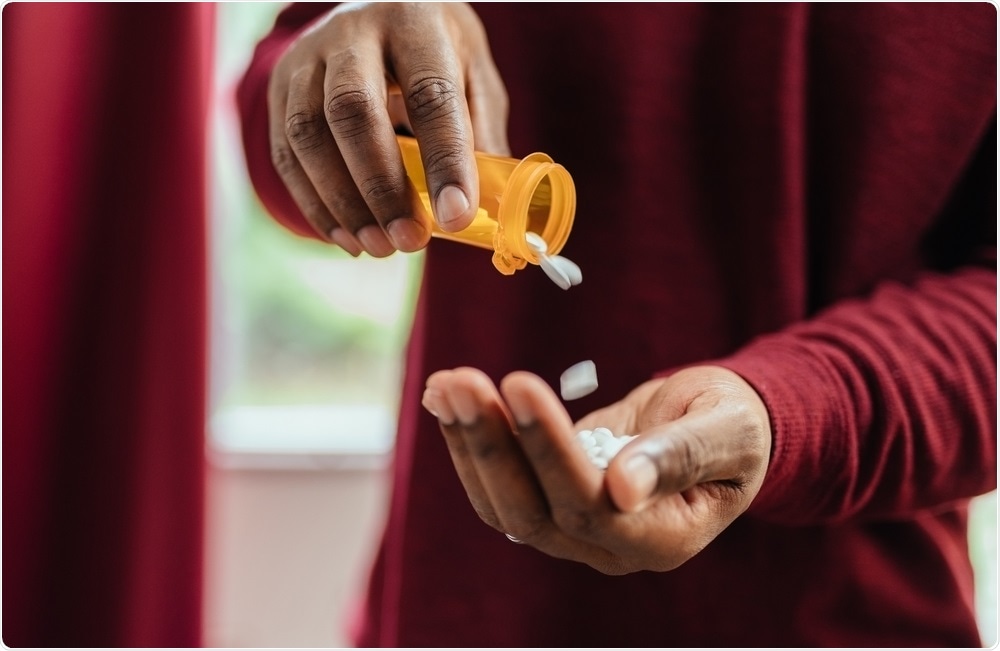According to the Centers for Disease Control and Prevention (CDC), more than 500,000 individuals in the U.S. died as a result of drug overdose between 2007 and 2017. Increasingly, the deaths are involving synthetic opioids that primarily come from China.
The epidemic is so severe that around 130 Americans die every day from opioid-related causes. In addition, cases of opioid overdoses are now six times higher than those recorded in 1999.
Now, researchers have developed an implant that has shown promise for reducing addiction rates. However, there are major ethical and financial concerns, which we have tried to cover in this news story.
 RCH Photography | Shutterstock
RCH Photography | Shutterstock
The opioid epidemic has been portrayed in the media as a problem affecting white Americans, but in Baltimore and Washington, D.C., the majority of people dying from overdose are black. In Philadelphia, however, white people accounted for most opioid overdose deaths in 2017 compared with 2016, while deaths among blacks rose by 34% and deaths among Hispanics rose by 60%. A paper describing the epidemiology of opioid deaths in the U.S. has been published in JAMA Psychiatry.
We’re all trying to rapidly improve access to treatment. But we have to be thoughtful about really improving access to treatment for those who need it most."
Pooja Lagisetty, Assistant Professor, University of Michigan
Stimulating the brain’s pleasure center
The rising death toll has fuelled efforts to seek out effective treatments for drug addiction. Clinicians in the U.S. are interested in using deep brain stimulation (DBS), an approach that has long been used to treat movement disorders such as Parkinson’s. However, the U.S. National Institutes of Health will only fund experiments involving animals rather than people:
The lack of scientific clarity, the important but strict regulatory regime, along with the high cost and risk of surgery make clinical trials of DBS for addiction in the U.S. difficult at the present time.”
Emad Eskandar, Albert Einstein College of Medicine
In China, however, which has long used brain surgery to treat drug addiction, the first clinical trial of DBS is being carried out to treat a man (dubbed Patient Number One) for his methamphetamine addiction.
At Shanghai’s Ruijin Hospital, the man will have a pacemaker-like device surgically implanted that will electrically stimulate certain areas of the brain. Two electrodes will be threaded into a brain region called the nucleus accumbens. Also sometimes referred to as the brain’s “pleasure center,” this small structure is thought to be involved in motivation, pleasure, and addiction.
While efforts to push forward with human trials of DBS for addiction have foundered in Western countries, China is becoming a hotspot for the research.
Recruiting patients for trials of DBS for addiction has proved difficult in European countries and concerns over ethical, social and scientific aspects have made it difficult to push such studies forward in the U.S., where the electrical stimulation devices can cost up to $100,000 to implant.
China, on the other hand, has a long history of using brain surgery to treat drug addiction and to this day, the nation’s “correctional” anti-drug laws can result in people being forced into compulsory treatments. Aside from its huge patient population, the nation has governmental funding and determined scientific instrumentation companies all prepared to invest in DBS research.
‘A lots of risks’
According to the U.S. National Institutes of Health, eight clinical trials of DBS for drug addiction are currently being conducted worldwide and six of those are taking place in China.
Before surgical brain implants were used in China, doctors carried out another process called brain lesioning, a high-risk procedure that involves ablating small regions of brain tissue with the hope of restoring patients’ function and quality of life.
Family members of heroin addicts would pay thousands for loved ones to be treated using procedure. Brain lesioning therefore quickly became a reliable source of profit for some hospitals, despite many users being left with memory problems, altered sex drives, and mood disorders.
Although China’s Ministry of Health did put a stop to brain lesioning in 2004, doctors working at a hospital in Xi’an reported nine years later that approximately half of the 1,167 patients they had treated using the procedure had not taken drugs for five years or more.
Now, the country is building on that history by introducing DBS, which unlike brain lesioning does not irreversibly destroy brain tissue. There is a renewed interest globally in experimenting with the technique as a treatment for addiction and in February, the U.S. Food and Drug Administration gave the go-ahead for a clinical trial of DBS for opioid addiction.
However, critics disapprove of the surgery, arguing that it is too early to experiment on humans and that using DBS does not address the psychological, biological and social aspects that contribute to addiction.
It would be fantastic if there were something where we could flip a switch, but it’s probably fanciful at this stage… There’s a lot of risks that go with promoting that idea.”
Adrian Carter, Monash University
Neurosurgeon Nader Pouratian (University of California in Los Angeles), on the other hand, believes there has been a “reset in the field” and thinks it is “a perfectly appropriate time” to research DBS for drug addiction.
However, “…only if we can move forward in ethical, well-informed, well-designed studies,” he adds.
Researchers eye brain implant for drug addiction
Source
Experimental brain implants studied as opioid deaths rise